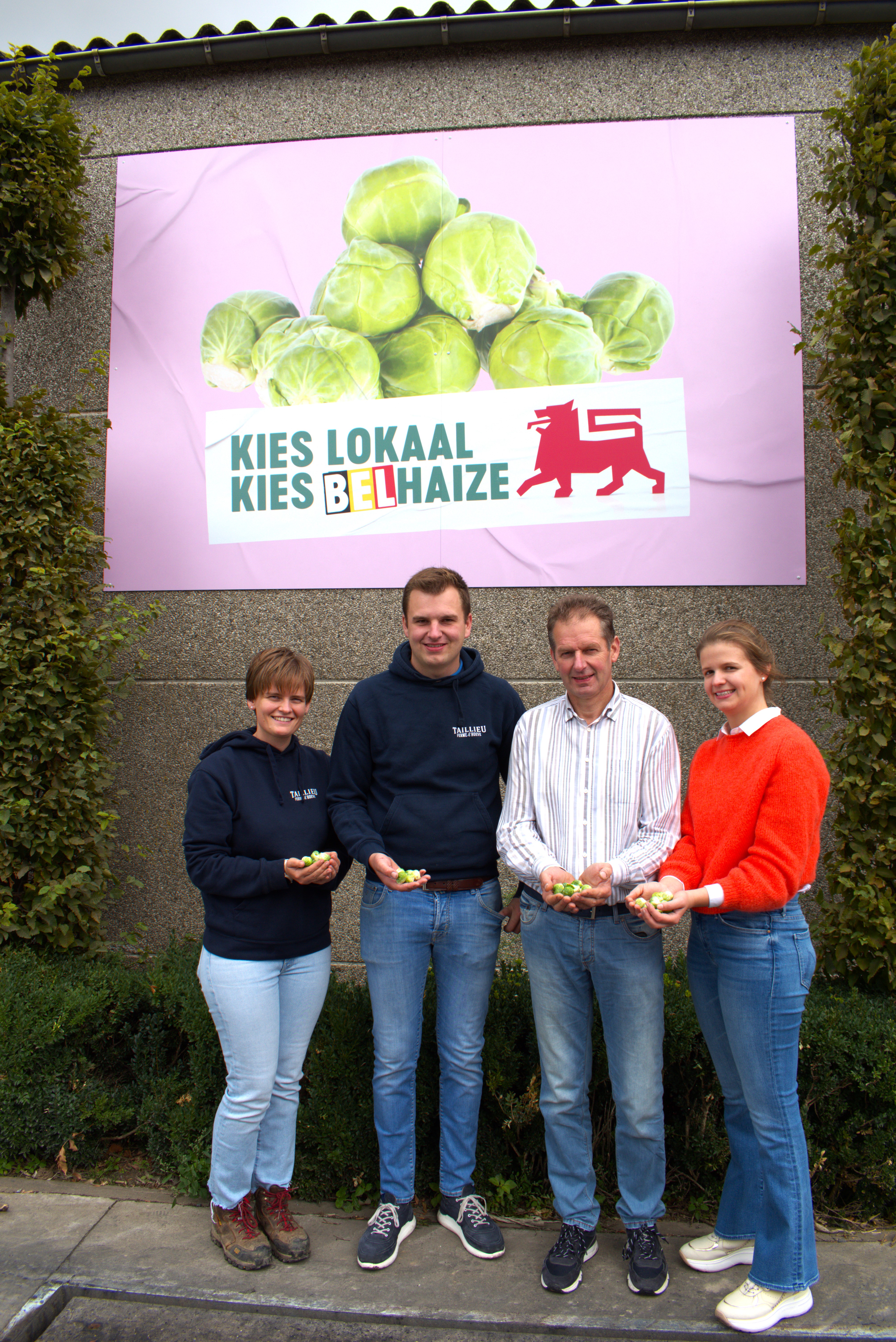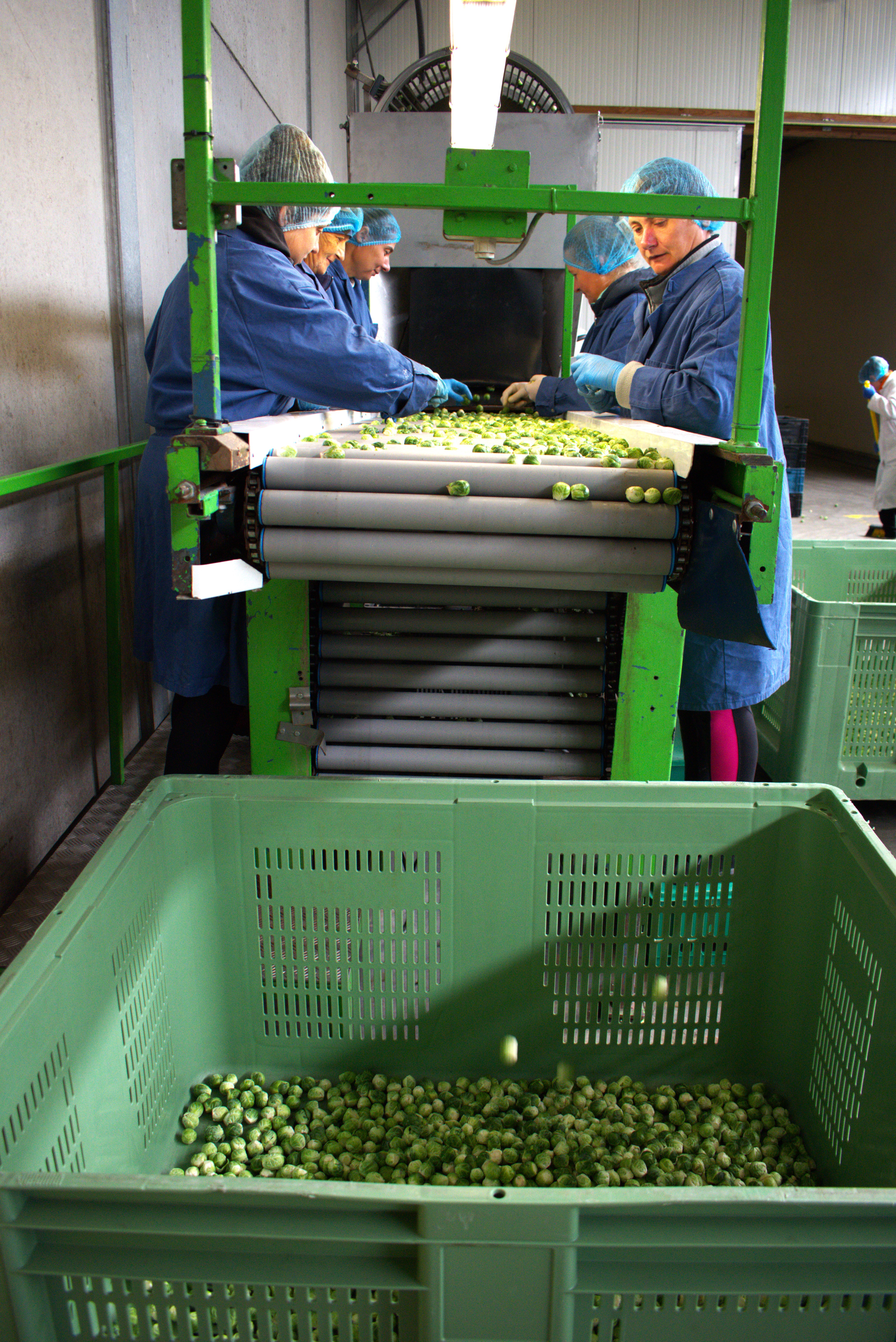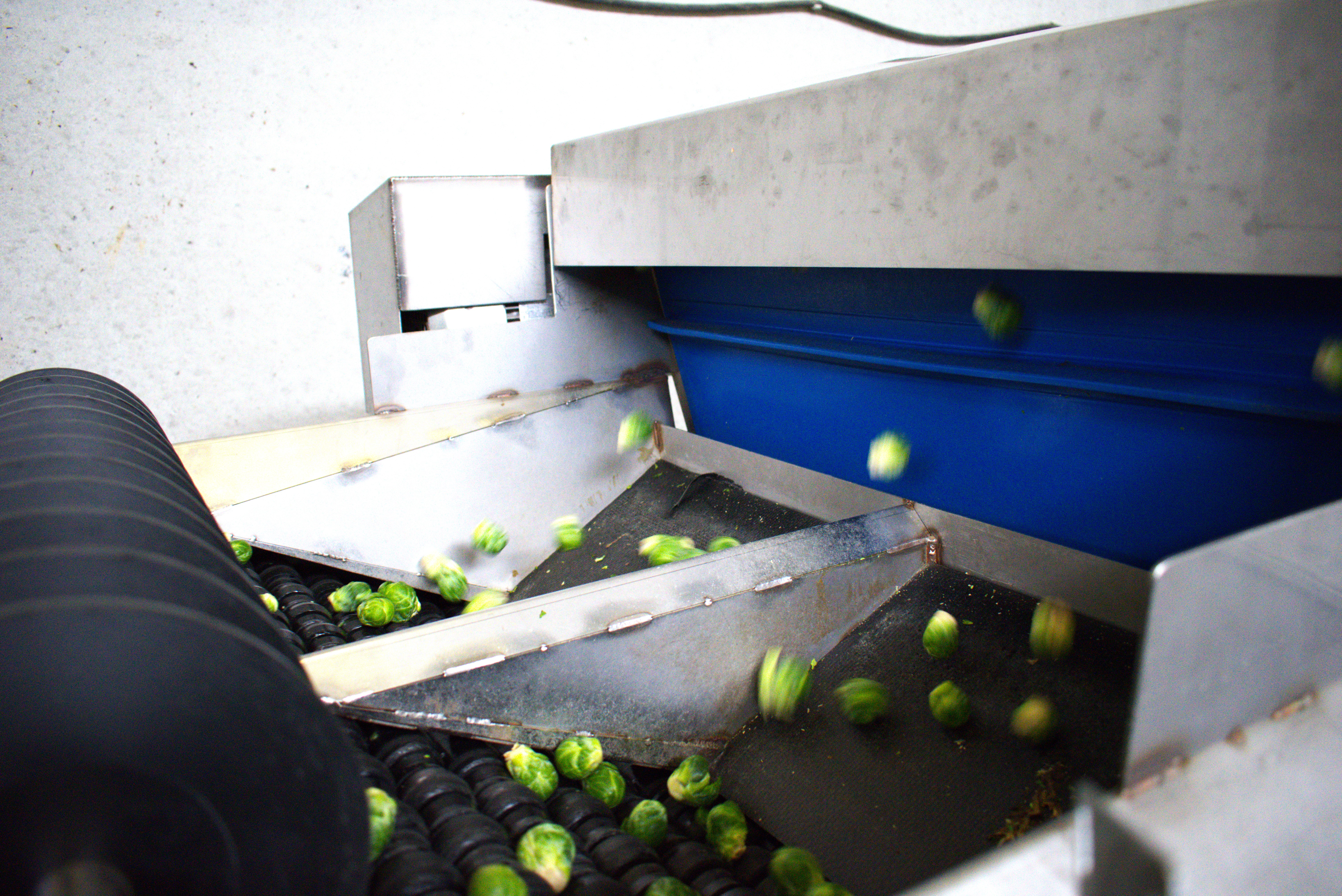Sprout Season is officially underway! These tasty little green cabbages, grown right here in Belgium,
are becoming increasingly popular at Belgian dinner tables. Our buyers are out every day sourcing
the very best sprouts from Belgian growers to bring straight to shop shelves.
We paid a visit to Ferme Taillieu, where our untrimmed sprouts 750g and trimmed sprouts 500g come
from, and spoke with Guy Taillieu.
To start off, could you tell us a bit more about your business?
My father was a farmer who mainly grew potatoes, beetroot and wheat. I joined him in the business
and in the early 1990s we started focusing on vegetable growing, mainly for the frozen food industry.
Around 2007–2008 we decided to take our sprouts to the fresh market as well. After about five years
of supplying sprouts for the fresh market, we realised it was a shame only to have contact with
retailers for half the year. So we started looking for new opportunities and when we noticed that very
few Belgian growers were still producing beans, we were quick to add them to our range.
On top of that, we also produce fresh chips, we raise pigs and grow sweetcorn, both for the fresh
market and for industry.
At any given time, we have 30 to 100 people working for us, depending on the season. Autumn is by
far our busiest time of year.

When are Brussels sprouts in season? Does their flavour change as the season progresses?
The Belgian sprout season kicks off in September nowadays and usually runs until around March.
Because of the dry, hot summer, the sprouts are still very small right now but once the rain sets in
they’ll catch up just fine.
In the past, sprouts would change in taste as the season went on, becoming less bitter after the first
frost. That’s no longer the case because today’s varieties are selected for flavour. They are much
sweeter than they used to be and frost no longer has an impact. That’s one of the reasons why more
and more consumers have been buying sprouts in recent years, which is great, of course!


You grow both regular sprouts and trimmed sprouts for Delhaize. What’s the difference, and
do they require different growing methods?
The cultivation itself is exactly the same but the choice of variety makes the difference. Trimmed
sprouts are cleaned mechanically so we need a slightly more elongated variety. This way, when the
base is cut off, you’re still left with a high-quality sprout.
How are the sprouts harvested?
Harvesting is done semi-automatically using tracked machines because driving a tractor over the
fields would completely ruin the land. There are four people in the cabin at the front, each responsible
for a different row. Words can only say so much so we like to show what we do in a video.
You can take a look at the video by clicking here.
How do you like to eat your sprouts, or what’s your favourite sprout dish?
Braised sprouts with fried bacon. Add a little cream and a touch of honey – perfect!
You participate in the Green Farming Pilot with Bakker and Delhaize. What is that like? What
does that involve specifically?
As part of the programme, we apply different fertiliser mixes and focus on using circular fertilisers.
This allows us to monitor how the soil evolves and fine-tune the fertilisation according to the crop’s
mineral nitrogen needs. We’ve also added flower beds along the edges of our fields. These used to
be grass beds but under the programme we’ve sown flowers to support biodiversity and attract more
insects and birds.
It’s a pilot project we’re really enthusiastic about, and we’re excited to see what will come out of it!